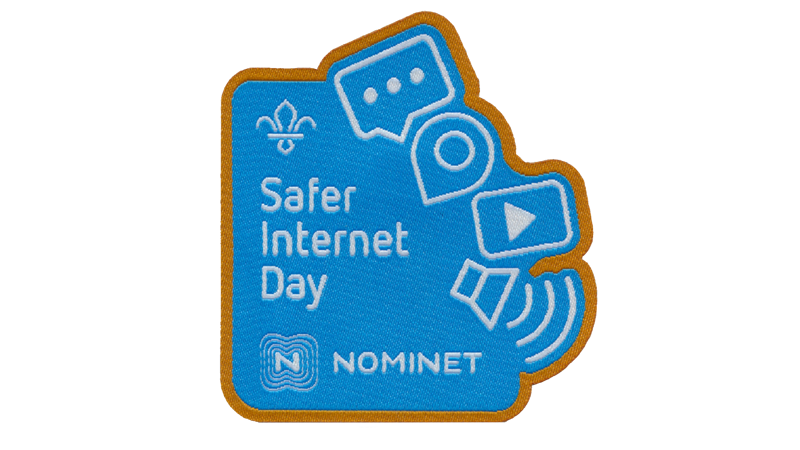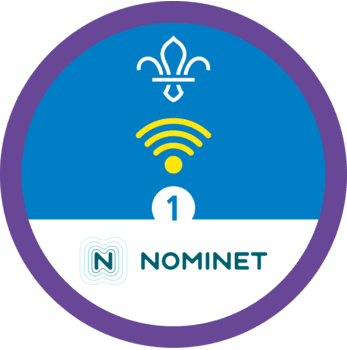
Mo and Jaz's tech tales
You’ll need
- A4 paper
- Pens or pencils
- Coloured pens or pencils
- A digital or printed copy of Mo and Jaz’s story
- A device to access the internet (optional)
Before you begin
- Use the safety checklist to help you plan and risk assess your activity. Additional help to carry out your risk assessment, including examples can be found here. Don’t forget to make sure all young people and adults involved in the activity know how to take part safely.
- Make sure you’ll have enough adult helpers. You may need some parents and carers to help if you’re short on helpers.
Planning this activity
- This activity use PowerPoint slides, these can be used with internet access of downloaded to a device such as a laptop. For areas without a device these can also be printed and shared or you could also just read the words aloud, without printing the pictures.
- You may want to have a copy of our online safety tips from Staying safe online to be able to share tips with young people or the people they live with.
Running the activity
- Gather everyone in a circle and ask if anyone uses a device or goes on the internet. Ask people what they use the internet for.
- Tell everyone that you’re going to read a story about two characters called Mo and Jaz. They’re going to help you learn about staying safe online. The ‘noise’ words in the story, such as whoosh, ping and pop, have all been designed to stand out. You could ask everyone to join in with these words or create an action to help with active listening and keep people engaged.
- When everyone’s ready and comfortable, read the story to the group in whichever way works best for you.
- Remember to pause when there are questions and ask them to the group. You can let a few people answer each time and make sure there’s time to discuss their answers all together.
- At the end of the story, ask everyone what they can remember and what they've learned.
- Ask everyone to take a piece of paper and a felt tip. They should draw round their hand or a friend’s hand. On each of the fingers of their drawn hand, they should write down or draw someone they can trust to speak to about anything that worries or scares them that they see online. For example, they might tell their mum, dad, grandparent, aunt, uncle, older sibling or teacher.
Reflection
In this story, we meet Mo and Jaz, who love playing games online. When they're watching videos online and they see a video that makes them feel worried, they realise they need to tell an adult.
Do you like using the internet or devices, such as a tablet? What do you do on them? Why do you like using them?
Think about the story. What did you learn from the story? How did Mo and Jazz feel? Have you ever felt like that when you were online? Or, have you ever had a video come on that you didn’t want to watch? What did or would you do? Who are your trusted adults?
What are three things we can do when something makes us feel unhappy or uncomfortable, such as someone being unkind? For example, telling an adult if someone’s making you feel sad or being mean to you.
Safety
All activities must be safely managed. You must complete a thorough risk assessment and take appropriate steps to reduce risk. Use the safety checklist to help you plan and risk assess your activity. Always get approval for the activity, and have suitable supervision and an InTouch process.
- To make this activity easier, you could offer some multiple-choice answers to the questions.
- To make this activity harder, you could let young people try to guess what happens next or ask some more questions based on the story.
- Some people, such as those with a hearing or visual impairment, may need their own copy of the presentation, even if you’re looking at it online, so they hold it closer to them to see or read it.
- Remember, not all young people will have the same experience, access or knowledge when it comes to technology. Each person’s grown ups may also have different rules around their young person’s use of technology. Make sure to check that everyone understands what everything means and what everything is.
- This activity might involve lots of sitting and listening. Make sure to take movement breaks in between the questions and let people sit how they feel most comfortable, including lying down.
- You could also use photos or stickers if people may struggle to write names. Alternatively, adult volunteers or young leaders could help people to write.
All Scout activities should be inclusive and accessible.
You could ask young people to design a leaflet or poster, or create their own story, based on another online safety tip. Take a look at our digital safety advice for young people and our other online safety activities with Nominet. Consider rewarding the group with the blanket badge.
